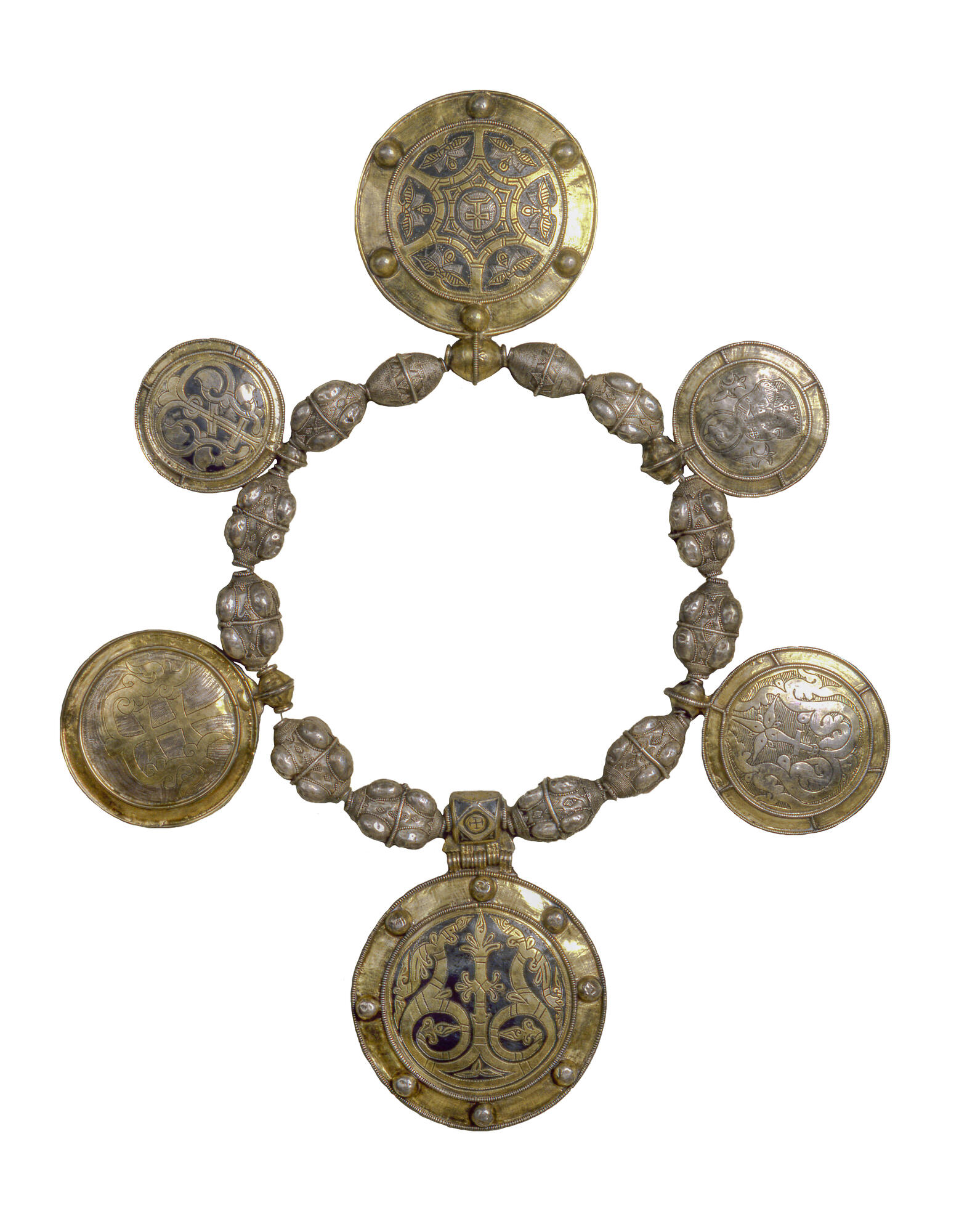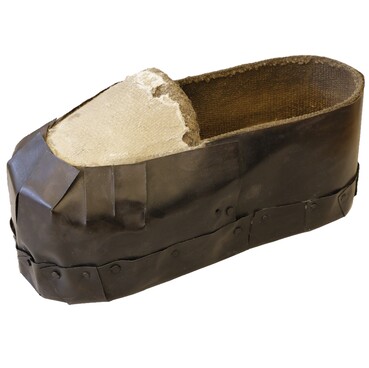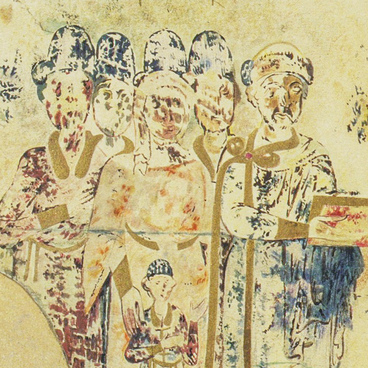The Suzdal neck-piece which is housed in the State Historical Museum is a ceremonial decoration made of silver with nielloing, gilding and carved ornaments. It consists of six round medallions of different sizes and 12 gilded beads placed between them. Each bead is made of two halves. Ten beads have the same size and shape, two smaller ones differ from them. The cord from the necklace was lost, the shape of the decoration was reconstructed by museum specialists.
The neck-piece was discovered in 1851 by an archaeologist, one of the founders of the Historical Museum, Count Aleksey Uvarov. At that time, he conducted excavations of ancient kurgans — or burial mounds — in the vicinity of Suzdal. Near the main burial site, on the slope of one of the mounds under the turf, the scientist found plaques-medallions and beads stacked together. The remnants of the cord that connected them were found in one of the beads. Most likely, the neck-piece was hastily hidden in the ground of the kurgan, which had already been constructed by that time. This could have happened during the Khan Batu’s invasion in 1237–1240. Residents of Suzdal left the city in a hurry to get away from the Mongol troops. Some tried to bring their valuables with them, others hid them in the ground or in special hiding places. Not all were able to return for their property later.
One of the smaller medallions features a waist-length image of a young saint with a halo around his head. According to researchers, this may be an image of Boris or Gleb. One of the larger medallions depicts a cross inscribed in a hexagon. On the other four medallions, one can see a pattern in the form of different versions of the flowering cross. Its base stem turns into two rising upwards branches with leaves.
Neck-pieces in Russia were called barmas. They were shoulder and chest decorations of grand princes worn over formal attire on special occasions.
The barmas were mentioned for the first time in literature in 1216, where it is said that all princes wear a “shoulder collar” sewn with gold. And since 1498, a type of this decoration was included as part of Russian royal regalia — along with a scepter, a globus cruciger, a cross and a crown.
The neck-piece was discovered in 1851 by an archaeologist, one of the founders of the Historical Museum, Count Aleksey Uvarov. At that time, he conducted excavations of ancient kurgans — or burial mounds — in the vicinity of Suzdal. Near the main burial site, on the slope of one of the mounds under the turf, the scientist found plaques-medallions and beads stacked together. The remnants of the cord that connected them were found in one of the beads. Most likely, the neck-piece was hastily hidden in the ground of the kurgan, which had already been constructed by that time. This could have happened during the Khan Batu’s invasion in 1237–1240. Residents of Suzdal left the city in a hurry to get away from the Mongol troops. Some tried to bring their valuables with them, others hid them in the ground or in special hiding places. Not all were able to return for their property later.
One of the smaller medallions features a waist-length image of a young saint with a halo around his head. According to researchers, this may be an image of Boris or Gleb. One of the larger medallions depicts a cross inscribed in a hexagon. On the other four medallions, one can see a pattern in the form of different versions of the flowering cross. Its base stem turns into two rising upwards branches with leaves.
Neck-pieces in Russia were called barmas. They were shoulder and chest decorations of grand princes worn over formal attire on special occasions.
The barmas were mentioned for the first time in literature in 1216, where it is said that all princes wear a “shoulder collar” sewn with gold. And since 1498, a type of this decoration was included as part of Russian royal regalia — along with a scepter, a globus cruciger, a cross and a crown.



